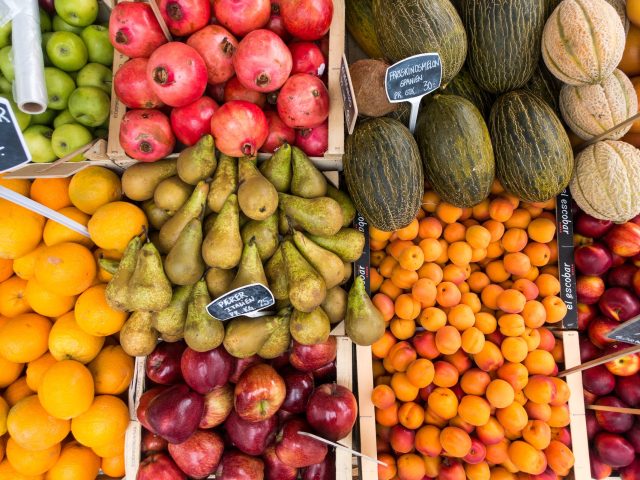
Digital advertising is like a team sport, and the Demand-Side Platforms, Supply-Side Platforms and ad exchanges are its main players. Today, we’re taking a closer look at DSPs and the key features that make them indispensable for advertisers.

What is a Demand Side Platform
A Demand-Side Platform (DSP or buy-side platform) is a software solution that enables advertisers to manage and buy ad inventory programmatically. Such platforms are a very important part of the ad buying process, as they automate it. By automating bidding decisions, DSPs enable programmatic advertising to run faster and more efficiently. They make managing ads much easier, which is why DSPs have become irreplaceable as online advertising has grown more complex. Instead of manually negotiating with numerous publishers, advertisers can handle everything automatically through real-time bidding networks.
Demand Side Platform (DSP) vs other platforms
SSPs and DSPs are not directly linked one-to-one; instead, they’re connected through ad exchanges and real-time bidding (RTB) protocols. However, they both play a crucial role in the programmatic chain. Here’s more about each crucial part of it:
- Supply-Side Platforms (SSPs or sell-side platforms) aid publishers in selling their ad inventory. They support a variety of ad formats, including display, native, and video ads, to maximize revenue opportunities;
- Ad exchanges work like a digital meeting point for the ad industry, DSPs place bids, SSPs offer impressions, and both sides find the best match. It’s where advertisers’ needs align with publishers’ ad inventory. Advertisers can access inventory from multiple ad exchanges, either directly or through a DSP;
- Ad networks are intermediaries between publishers and advertisers. As mentioned above, an ad exchange serves as a digital marketplace where publishers and advertisers trade ad inventory. This differs from ad networks, which collect ad space from publishers first and then sell it to advertisers;
- Ad server, in essence, takes care of the technical side of the whole ad process, making sure ads are delivered correctly, shown at the right time, and tracked across all platforms;
- Data Management Platforms (DMPs) – their main aim is to collect information from different sources, like websites, apps, social media, emails, and even customer support interactions, and bring it all together in one place. Once everything’s organized, the platform helps advertisers understand their audiences better and decide how to target them more effectively in programmatic ad campaigns. What’s vital is that the DMP and DSP work hand in hand to make programmatic advertising run smoothly. The DMP gathers and organizes audience data, which is then utilized by the DSP.
How DSPs Work
It’s hard to explain how Demand-Side Platforms work without looking at the bigger picture. As we already established, SSPs, DSPs, and ad exchanges are core components of the programmatic advertising ecosystem that work hand in hand. Here’s how:
The moment an ad slot becomes available on a publisher’s site, the SSP sends information about it (like audience data, page context, and placement details) to an ad exchange. Then, the DSP receives this information from the exchange and starts searching for the most suitable ad to display. It decides, within the blink of an eye, whether to bid and for how much.
DSP types
- White-label DSPs give advertisers full control over ad buying. The most vital thing to know is that you acquire the platform and then tailor it to adapt it to your requirements. Additionally, white-label DSPs remove the necessity of working with intermediaries such as ad networks, allowing marketers greater independence and visibility in managing their campaigns;
- Self-serve DSPs, in contrast to white-label DSPs, require you to register and pay a recurring subscription fee. They offer a simpler and more affordable entry point for advertisers looking to purchase ad impressions programmatically. Advertisers can take full control of their campaigns instead of relying on external managers;
- Full-service DSPs work similarly to digital advertising agencies, as such platforms handle most aspects of an ad campaign for a customer. However, advertisers can’t always customize campaigns the way they want, as choosing a full-service Demand-Side Platform means losing some control and flexibility.
Choosing the Right DSP
Choosing the type of Demand-Side Platform (white-label, self-serve, or full-service, as described in the paragraph above) is just the starting point when selecting a suitable platform. Here are some other factors that you should consider:
- It’s an undeniable fact that successful ad campaigns depend on solid data and smart targeting. The best DSPs give an advertiser flexible tools to reach the right audience and use different kinds of data effectively;
- It’s crucial to choose the DSP with trustworthy and varied ad inventory. Ads should be shown on real, active platforms that reach real people, and it helps if the DSP offers many ad formats;
- Lastly, advertisers should look for Demand-Side Platforms that offer excellent tracking and reporting capabilities. Basically, a DSP should give clear insights into what’s working, like engagement and visibility, not just basic statistics.
Benefits of Using a DSP
- DSPs simplify digital advertising by putting everything in one dashboard. You can run one campaign across multiple sites without the need to switch tools;
- You have more control over ad safety, meaning you help to protect your brand and avoid ad fraud by ensuring ads only appear in safe, appropriate environments;
- Demand-Side Platforms aid in reaching the right audience at the right time based on factors such as behavior, demographics, or interests.
Top DSP Platforms
So, here are some top DSP examples:
optAd360 – a solution for publishers
Our mission is to help publishers maximize their ad revenue by connecting them to a network of buyers, including various DSPs. To guarantee our publishers the best results, we partner only with the most trusted and reputable companies in digital monetization. Get familiar with our website monetization, mobile app monetization, mobile game monetization, and video monetization solutions!
FAQ
- What is a Demand-Side Platform?
It’s a software dedicated to advertisers. With it, advertisers can seamlessly purchase digital ad inventory from various sources automatically. - How much does it cost to use a DSP?
The cost of using a DSP usually depends on the fee model: most commonly, it’s a percentage of media spend, typically 5–20%. - What’s the difference between a DSP, SSP, and ad exchange?
In short, while DSPs serve advertisers and SSPs serve publishers, ad exchanges act as the marketplace linking supply and demand.

